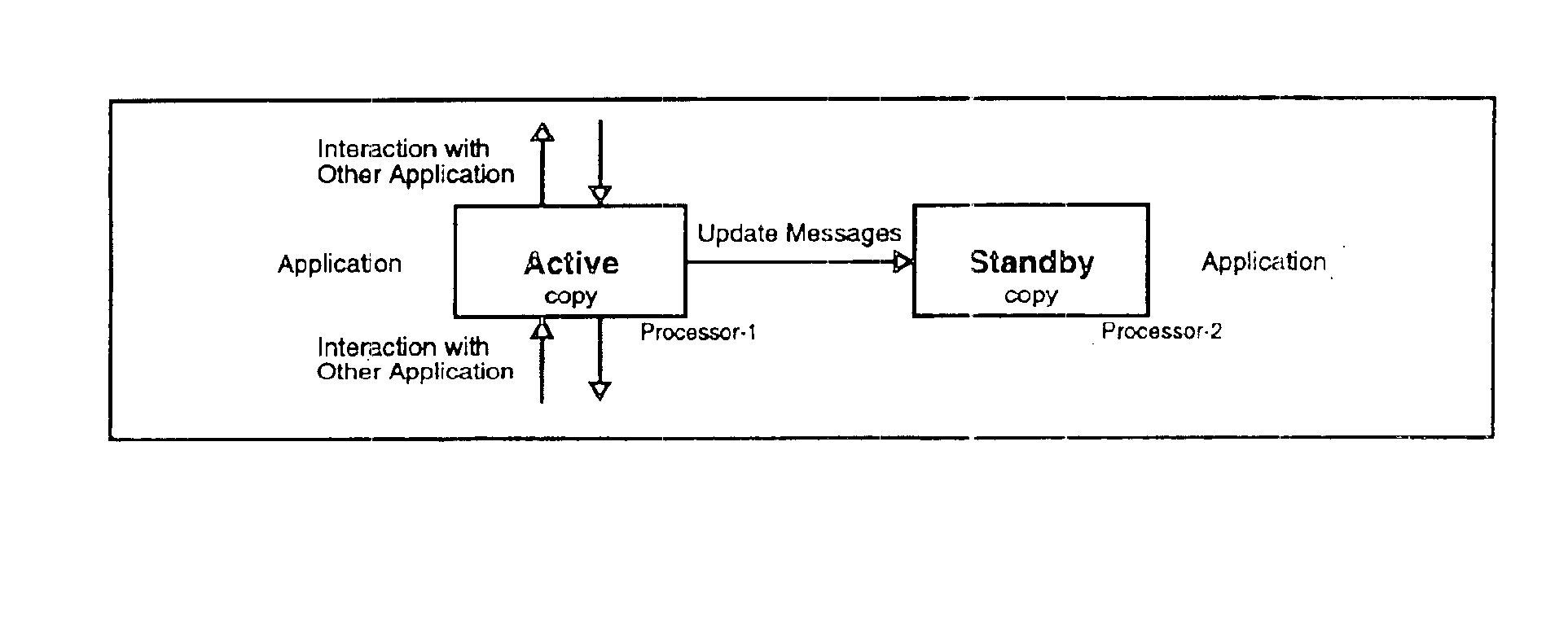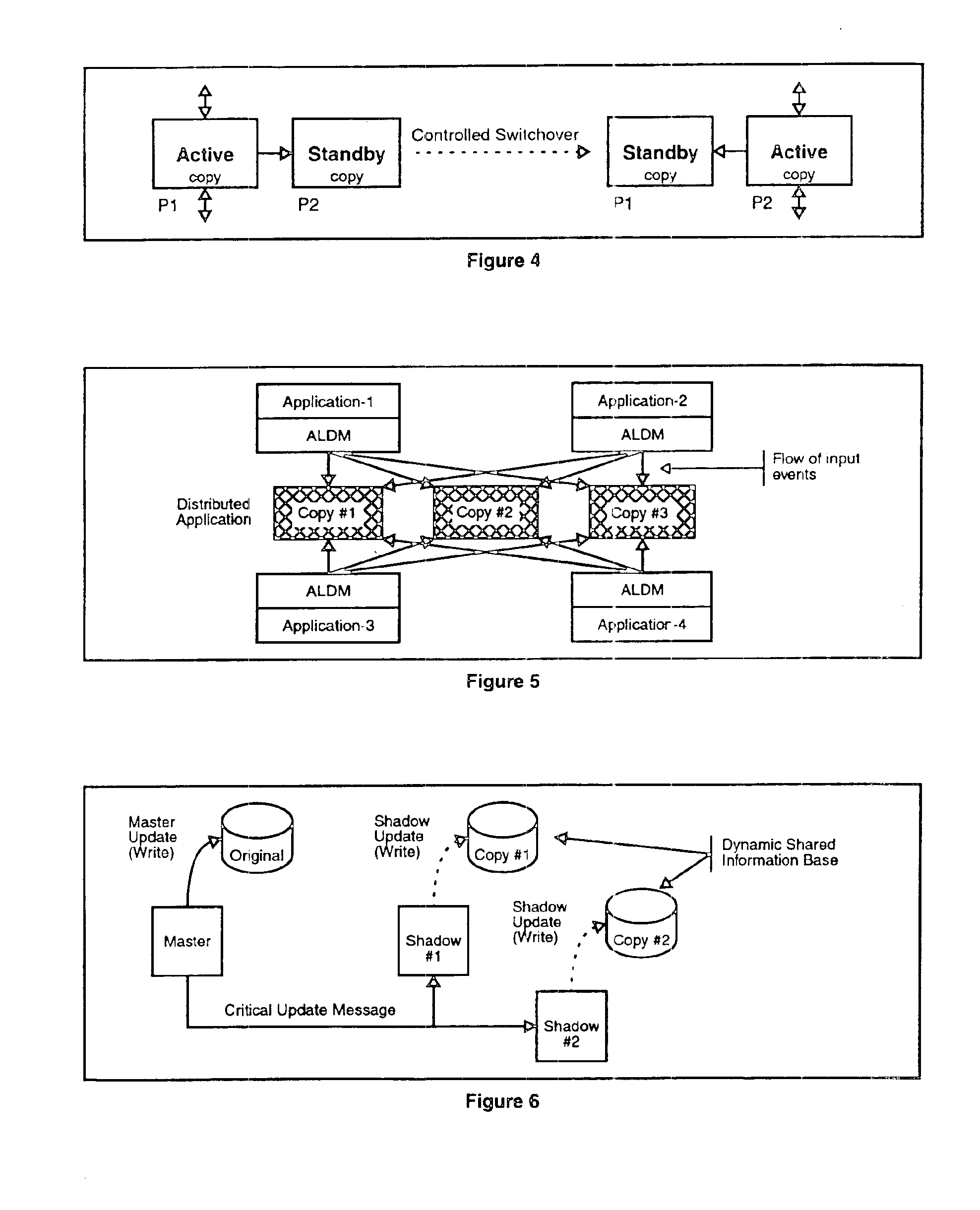Apparatus and method for building distributed fault-tolerant/high-availability computed applications
a computed application and distributed fault technology, applied in the field of distributed fault-tolerant and high-availability systems, can solve the problems of high system cost, widespread havoc, and huge economic losses, and achieve the effect of optimizing hardware utilization
- Summary
- Abstract
- Description
- Claims
- Application Information
AI Technical Summary
Benefits of technology
Problems solved by technology
Method used
Image
Examples
Embodiment Construction
The present invention comprises a Distributed Fault-Tolerant / High-Availability architecture for computer software applications. This architecture allows construction of distributed fault-tolerant computer systems.
The Distributed Fault-Tolerant / High-Availability (DFT / HA) architecture is used to build high performance fault-tolerant computer systems wherein the performance of the computer system is increased by distributing applications across multiple hardware platforms. This architecture employs a system of distributed processing to achieve high performance for each application in the computer system. The architecture enables one application to operate on a plurality of hardware platforms, allowing the system as a whole to process an increased number of events simultaneously.
The inventive DFT / HA architecture also provides a high performance, high-availability architecture for computer systems. The architecture employs the concept of double redundancy of hardware and software system ...
PUM
 Login to View More
Login to View More Abstract
Description
Claims
Application Information
 Login to View More
Login to View More - R&D
- Intellectual Property
- Life Sciences
- Materials
- Tech Scout
- Unparalleled Data Quality
- Higher Quality Content
- 60% Fewer Hallucinations
Browse by: Latest US Patents, China's latest patents, Technical Efficacy Thesaurus, Application Domain, Technology Topic, Popular Technical Reports.
© 2025 PatSnap. All rights reserved.Legal|Privacy policy|Modern Slavery Act Transparency Statement|Sitemap|About US| Contact US: help@patsnap.com



